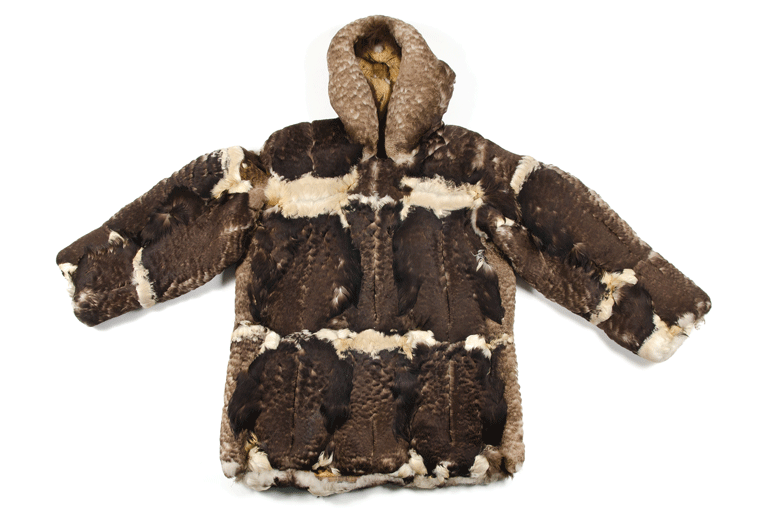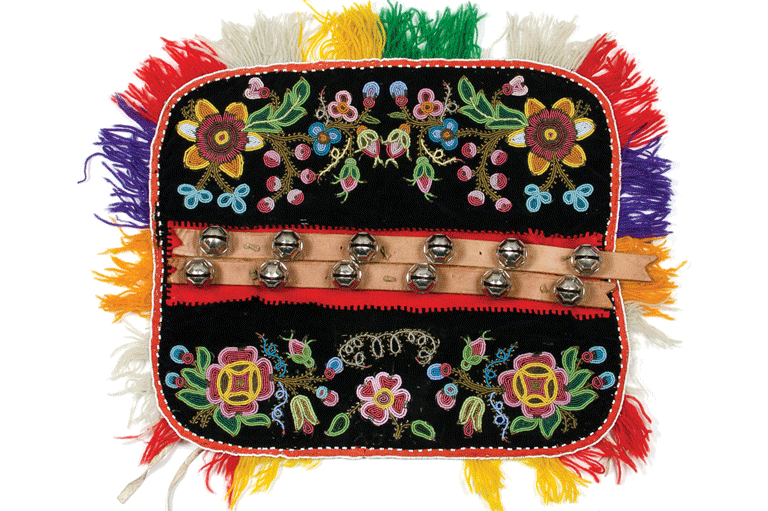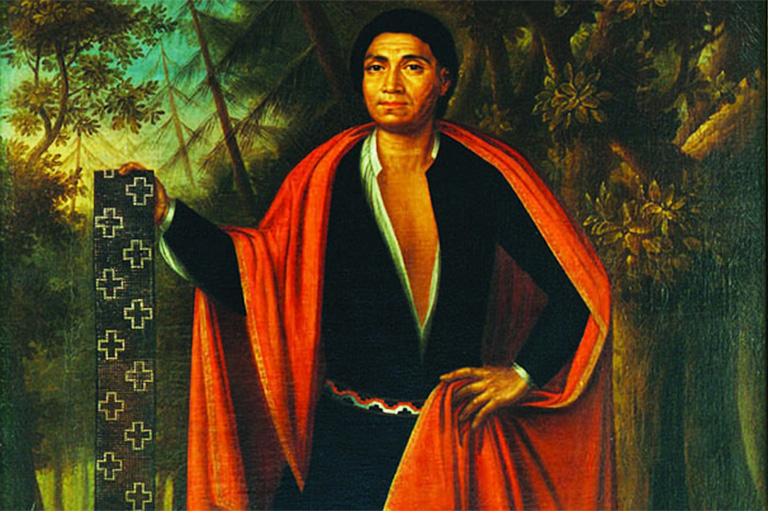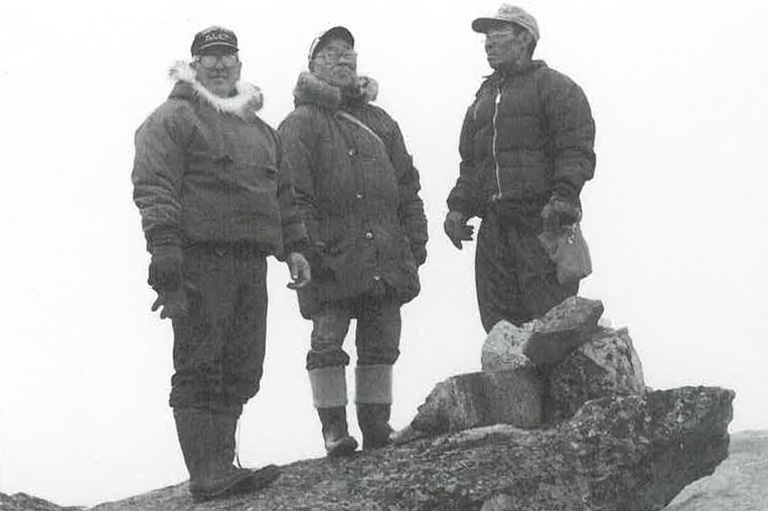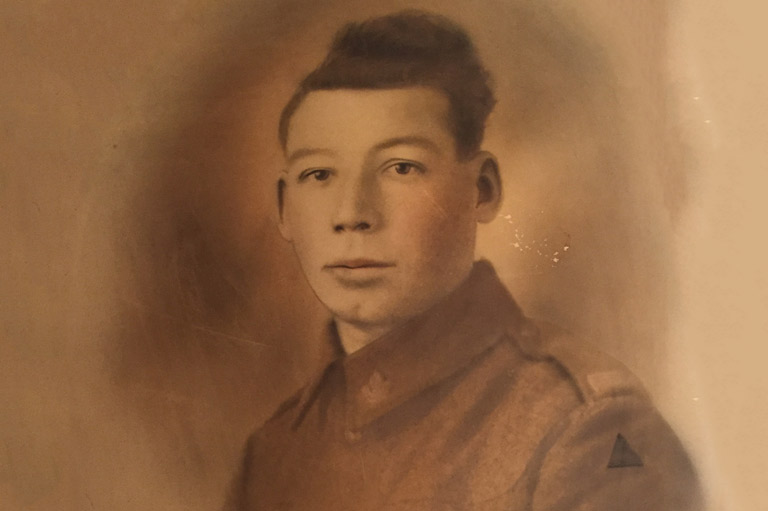Bandolier Bag
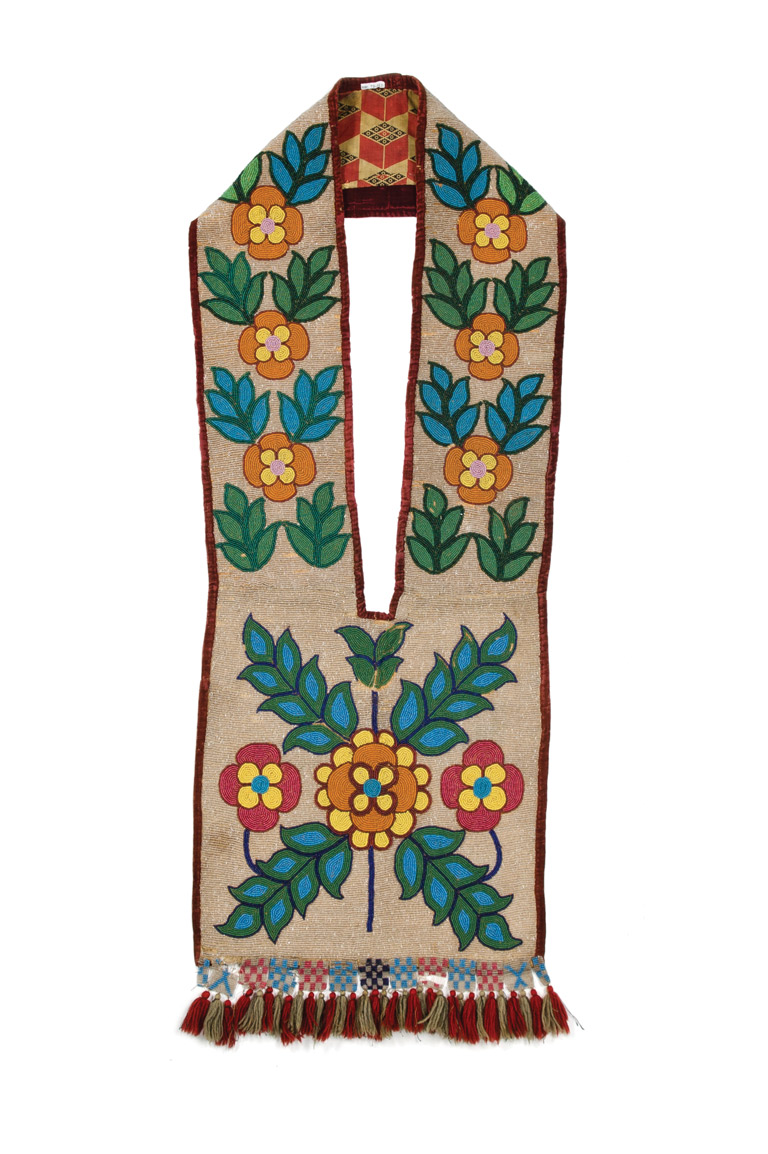
The Anishinabe word for bandolier bag is Aazhooningwa’on, which means “worn across the shoulder.” These bags are worn diagonally across the body, like a messenger bag. They originated with Indigenous groups in the Eastern Woodlands/Great Lakes area and were actually modelled after European military ammunition bags. Using trade cloth, women would sew hundreds of small glass trade beads over the entire surface of the bag and its strap, often filling all of the negative space with beads. The result is an incredibly beautiful but very heavy piece of wearable art. The earliest bags were purely decorative, lacking a pocket or pouch, and they were worn as part of men’s ceremonial outfits. This late-nineteenth-century bag is an excellent example of the symmetry and floral and leaf designs of the Anishinabe.
Themes associated with this article
Advertisement

